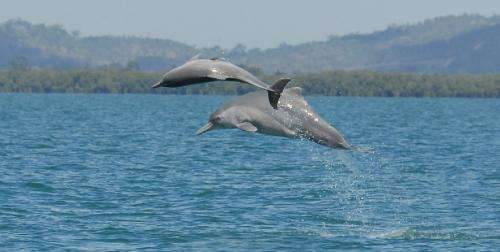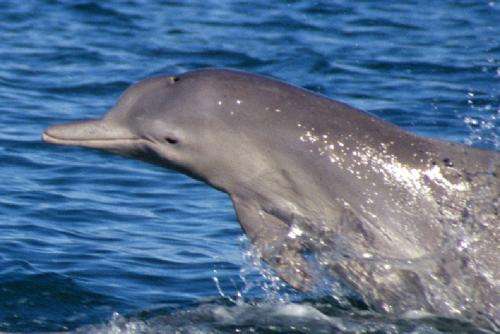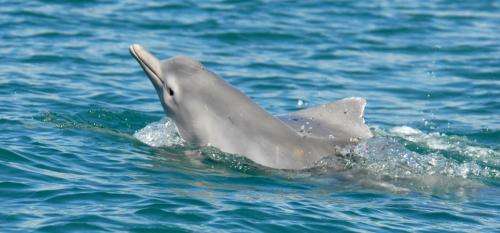Scientists find that dolphin in Australian waters is a new species

A species of humpback dolphin previously unknown to science is swimming in the waters off northern Australia, according to a team of researchers working for the Wildlife Conservation Society, the American Museum of Natural History, and numerous other groups that contributed to the study.
To determine the number of distinct species in the family of humpback dolphins (animals named for a peculiar hump just below the dorsal fin), the research team examined the evolutionary history of this family of marine mammals using both physical features and genetic data. While the Atlantic humpback dolphin is a recognized species, this work provides the best evidence to date to split the Indo-Pacific humpback dolphin into three species, one of which is completely new to science.
"Based on the findings of our combined morphological and genetic analyses, we can suggest that the humpback dolphin genus includes at least four member species," said Dr. Martin Mendez, Assistant Director of WCS's Latin America and the Caribbean Program and lead author of the study. "This discovery helps our understanding of the evolutionary history of this group and informs conservation policies to help safeguard each of the species."
The authors propose recognition of at least four species in the humpback dolphin family: the Atlantic humpback dolphin (Sousa teuszii), which occurs in the eastern Atlantic off West Africa; the Indo-Pacific humpback dolphin (Sousa plumbea), which ranges from the central to the western Indian Ocean; another species of Indo-Pacific humpback dolphin (Sousa chinensis), which inhabits the eastern Indian and western Pacific Oceans; and a fourth Sousa species found off northern Australia yet to be named (the formal adjustment of the naming and number of species occurs through a separate and complementary process based on these findings).

"New information about distinct species across the entire range of humpback dolphins will increase the number of recognized species, and provides the needed scientific evidence for management decisions aimed at protecting their unique genetic diversity and associated important habitats," said Dr. Howard Rosenbaum, Director of WCS's Ocean Giants Program and senior author on the paper.
Working to bring taxonomic clarity to a widespread yet poorly known group of dolphins, the authors assembled a large collection of physical data gathered mostly from beached dolphins and museum specimens. Specifically, the team examined features from 180 skulls covering most of the distribution area of the group in order to compare morphological characters across this region.

The researchers also collected 235 tissue samples from animals in the same areas, stretching from the eastern Atlantic to the western Pacific Oceans, analyzing both mitochondrial and nuclear DNA for significant variations between populations.
Provided by Wildlife Conservation Society





















